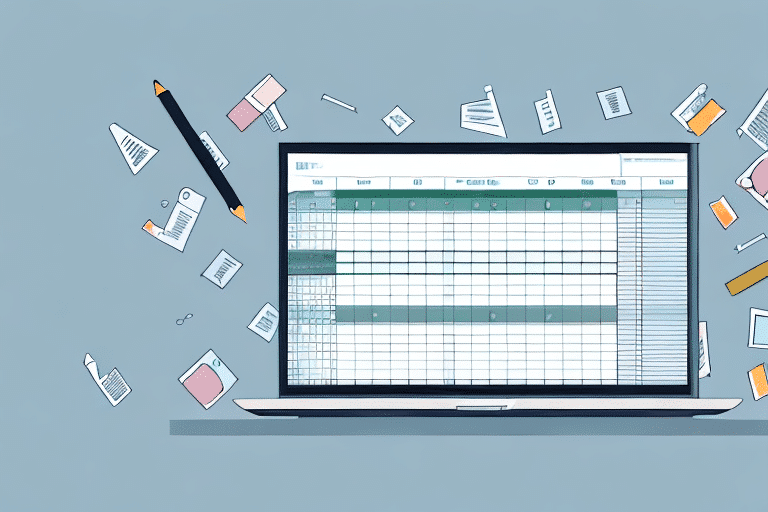5 Tricks to Optimizing Your Product Prices: An Ecommerce Guide
As an ecommerce business owner, pricing optimization is crucial for increasing sales and profitability. It's not just about setting a price and hoping for the best – it requires a strategic approach that takes into account market research, consumer behavior, and data analytics. In this article, we'll cover five effective strategies for optimizing your product prices and driving sales.
1. Understanding the Importance of Pricing Optimization in Ecommerce
Pricing optimization is the process of setting the right price for your products to maximize profitability. This involves analyzing market trends, understanding customer behavior, and utilizing data analytics tools to track sales and adjust prices accordingly. A well-optimized pricing strategy not only increases sales revenue but also enhances customer loyalty and brand recognition.
- Staying Competitive: By regularly monitoring and adjusting prices, ecommerce businesses can ensure that they offer competitive prices compared to their competitors. Tools like Shopify provide insights into market pricing trends.
- Targeting Customer Segments: Analyzing customer data helps identify which products are most popular among specific groups, allowing businesses to adjust prices to cater to their preferences.
2. Conducting Market Research to Identify Competitive Pricing
Before setting your prices, it's essential to conduct market research to understand your competitors' pricing strategies. Utilize platforms like Amazon and eBay to analyze how similar products are priced. However, avoid engaging in price wars, which can devalue your products and erode profit margins.
Understanding Your Target Audience
Gather data on your target audience's willingness to pay through surveys or focus groups. This helps set prices that are not only competitive but also appealing to your market. Resources like Qualtrics can assist in conducting effective market research.
Beyond Pricing: Other Influencing Factors
Remember that pricing is just one factor influencing purchasing decisions. Product quality, customer service, and brand reputation also play significant roles. Ensure that while your prices remain competitive, other aspects of your business are equally strong.
3. Analyzing Your Target Audience to Set Appropriate Prices
Understanding your target audience is crucial in determining the right price for your products. Research their purchasing power, income levels, and specific needs to decide whether to price your products moderately or aggressively.
Buying Behavior Insights
Analyze how your audience makes purchasing decisions. Do they prioritize quality over price, or are they more price-sensitive? Tools like Google Analytics can provide valuable insights into customer behavior.
Competitive Pricing Strategies
Keep an eye on your competitors' pricing strategies and adjust your own accordingly. This ensures that your prices remain attractive without sacrificing your profit margins.
4. Using Data Analytics Tools to Track Sales and Adjust Prices Accordingly
Data analytics tools are indispensable for tracking customer behavior and evaluating the effectiveness of your pricing strategy. By analyzing sales patterns, you can adjust prices to optimize profitability.
- Identify Best-Selling Products: Determine which products perform well and which do not. Focus on promoting top sellers while considering adjustments for underperforming items.
- Enhance Business Performance: Utilize tools like Tableau or Power BI to visualize sales data and make informed pricing decisions.
5. Importance of Pricing Psychology and Consumer Behavior in Setting Prices
Pricing psychology involves understanding how customers perceive prices and how this affects their purchasing behavior. For example, products priced at $9.99 often appear more attractive than those priced at $10.00.
Psychological Pricing Techniques
- Charm Pricing: Setting prices slightly below a round number (e.g., $9.99 instead of $10) can increase sales.
- Anchoring: Introducing a higher-priced item first can make subsequent prices seem more reasonable.
Understanding Consumer Behavior
Analyze the needs, preferences, and buying habits of your target audience to determine the optimal price point. For price-sensitive customers, lower prices might be necessary, whereas exclusive or high-quality products can sustain premium pricing.
6. Strategies for Offering Discounts and Promotions Without Devaluing Your Products
Discounts and promotions can boost sales, but it's important to implement them without devaluing your products.
Alternative Discount Methods
- Free Shipping: Offer free shipping on orders above a certain amount to increase average order value.
- Bundling Products: Combine related products and offer them at a reduced price.
Create a Sense of Urgency
Limit the time frame of promotions to encourage quick purchases. Exclusive discounts for loyal customers or referrals can also enhance customer loyalty without affecting overall product value.
7. Implementing Dynamic Pricing Strategies to Stay Competitive in the Market
Dynamic pricing involves adjusting your prices based on market trends and customer behavior. For example, you can increase prices during peak seasons and lower them during off-peak times to maximize profits.
Benefits of Dynamic Pricing
- Market Responsiveness: Quickly adapt to changes in the market, such as competitor price adjustments.
- Maximized Revenue: Optimize prices to match demand, ensuring maximum profitability.
Strategic Implementation
While dynamic pricing offers flexibility, it's essential to implement it strategically to avoid confusing customers or damaging your brand reputation. Use data-driven decisions and test different pricing strategies to find what works best for your business.
8. Benefits of A/B Testing to Determine Optimal Price Points
A/B testing involves comparing two pricing strategies to determine which is more effective. By testing different prices with a select group of customers, you can identify the optimal price point for maximum profitability.
Advantages of A/B Testing
- Data-Driven Decisions: Base your pricing strategy on real-world data rather than assumptions.
- Competitive Edge: Continuously refine your pricing to offer the best value, attracting and retaining customers.
9. Understanding the Impact of Shipping and Handling Fees on Pricing
Shipping and handling fees can significantly impact your overall pricing strategy. It's crucial to find a balance between offering affordable shipping options and maintaining your pricing strategy.
Strategies to Manage Shipping Costs
- Free Shipping Thresholds: Offer free shipping for orders above a certain amount to encourage larger purchases.
- Partner with Logistics Providers: Collaborate with reliable logistics companies to secure affordable shipping rates.
Ensuring Efficient Delivery
Customers expect quick and reliable delivery. Delayed or damaged shipments can lead to negative reviews and loss of customer trust. Invest in quality packaging and work with reputable logistics partners to maintain high service standards.
10. Best Practices for Communicating Price Changes to Customers
Effective communication is essential when implementing price changes to maintain customer trust and loyalty.
Transparency and Notice
- Be Transparent: Clearly explain the reasons for the price changes and how they affect customers.
- Provide Advance Notice: Inform customers ahead of time through emails or newsletters, allowing them to adjust their budgets.
Mitigating Negative Feedback
Offer discounts or promotions to soften the impact of price increases. Be prepared to address customer concerns and provide excellent customer service to maintain trust.
11. Identifying and Avoiding Common Pricing Mistakes in Ecommerce
Avoiding common pricing pitfalls can significantly enhance your pricing strategy and profitability.
Common Mistakes to Avoid
- Setting Prices Too Low: Undervaluing your products can erode profit margins and devalue your brand.
- Engaging in Price Wars: Competing solely on price can lead to unsustainable pricing and reduced profitability.
- Ignoring Target Audience: Failing to consider your customers' willingness to pay can result in misaligned pricing strategies.
12. Case Studies of Successful Ecommerce Businesses and Their Pricing Strategies
Learning from successful ecommerce businesses can provide valuable insights into effective pricing strategies.
Examples of Success
- Amazon: Utilizes dynamic pricing to adjust prices based on demand, competition, and other factors.
- Apple: Maintains premium pricing to reflect the quality and exclusivity of its products.
By analyzing these strategies, you can adapt similar techniques to enhance your own pricing approach.
13. Tools and Resources for Optimizing Your Product Prices in Ecommerce
Various tools and resources are available to assist in optimizing product prices in ecommerce.
Essential Tools
- Data Analytics: Google Analytics helps track customer behavior and sales patterns.
- Pricing Optimization Software: Platforms like Pricefx offer advanced pricing strategies and analytics.
- Consulting Services: Hiring pricing consultants can provide expert insights tailored to your business needs.
Educational Resources
Stay informed with resources like Shopify's pricing strategy guides to continuously refine your approach.
14. Conclusion: Key Takeaways for Optimizing Your Product Prices and Driving Sales
Optimizing your product prices is essential for driving sales and profitability in ecommerce. By conducting comprehensive market research, understanding your target audience, tracking sales patterns, and leveraging data analytics tools, you can set the optimal prices for your products. Additionally, incorporate pricing psychology, offer strategic discounts and promotions, and communicate transparently with your customers about any price changes. By implementing these strategies, you can enhance your pricing approach and drive sustained sales growth for your ecommerce business.




















